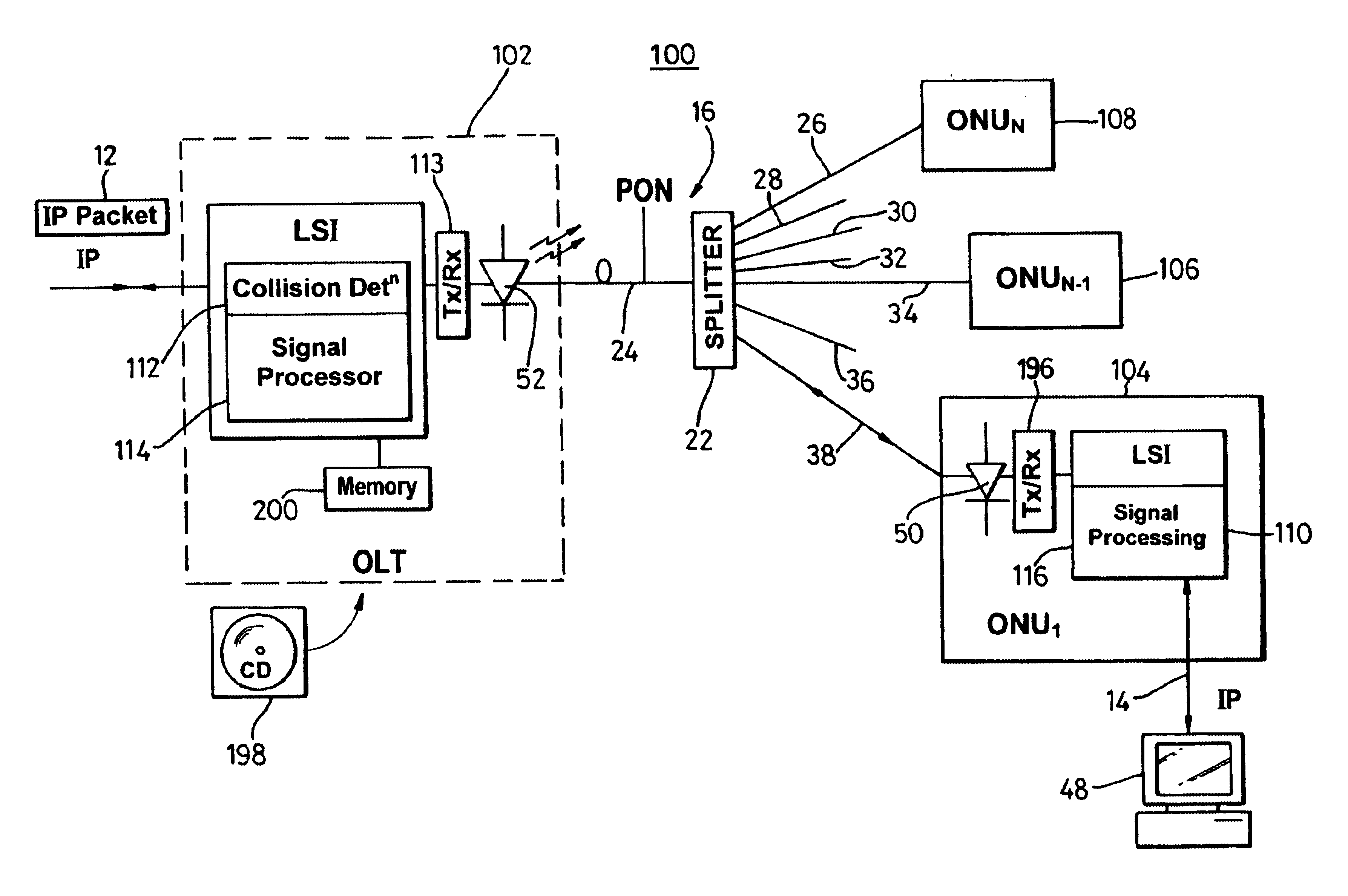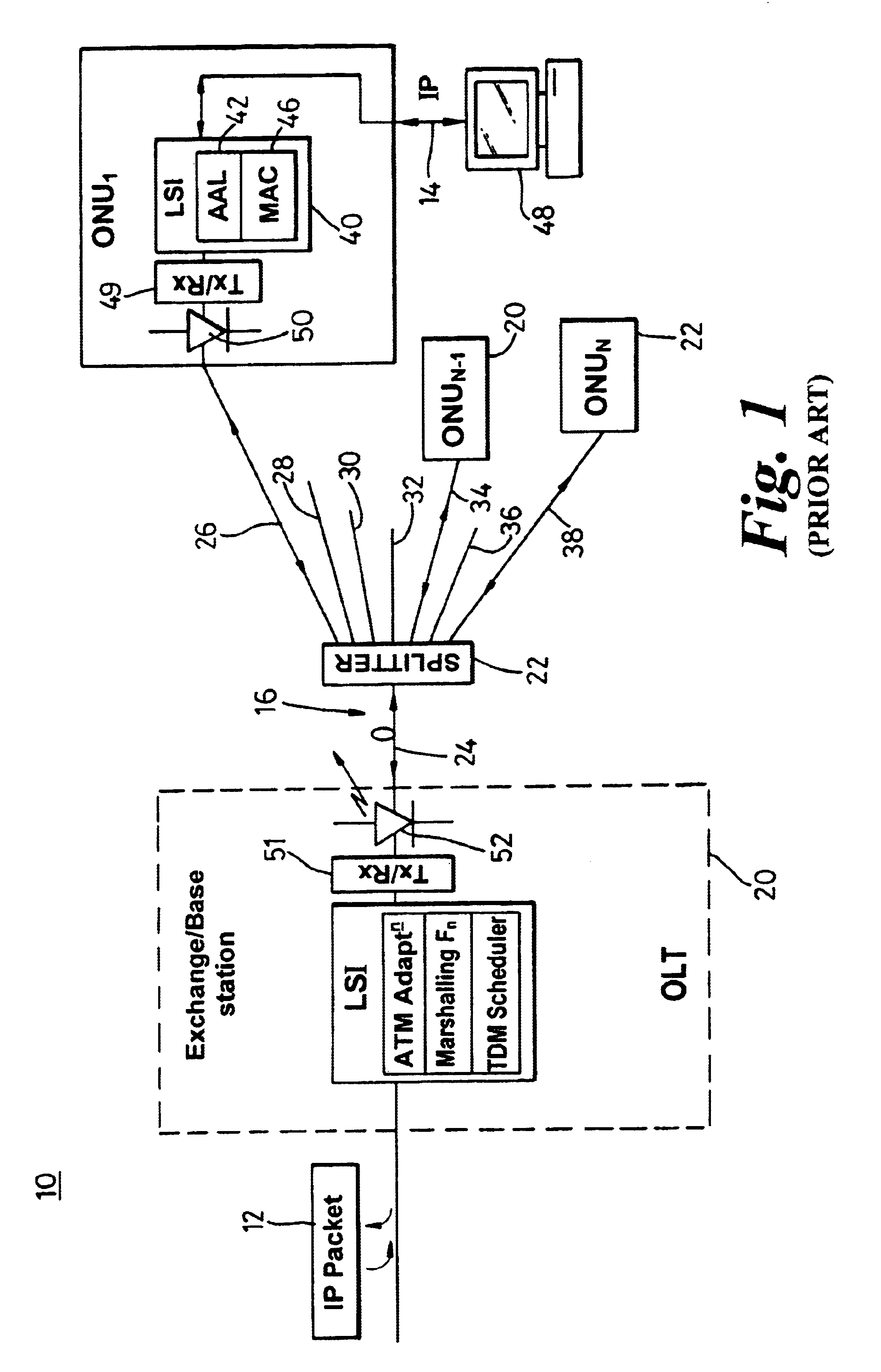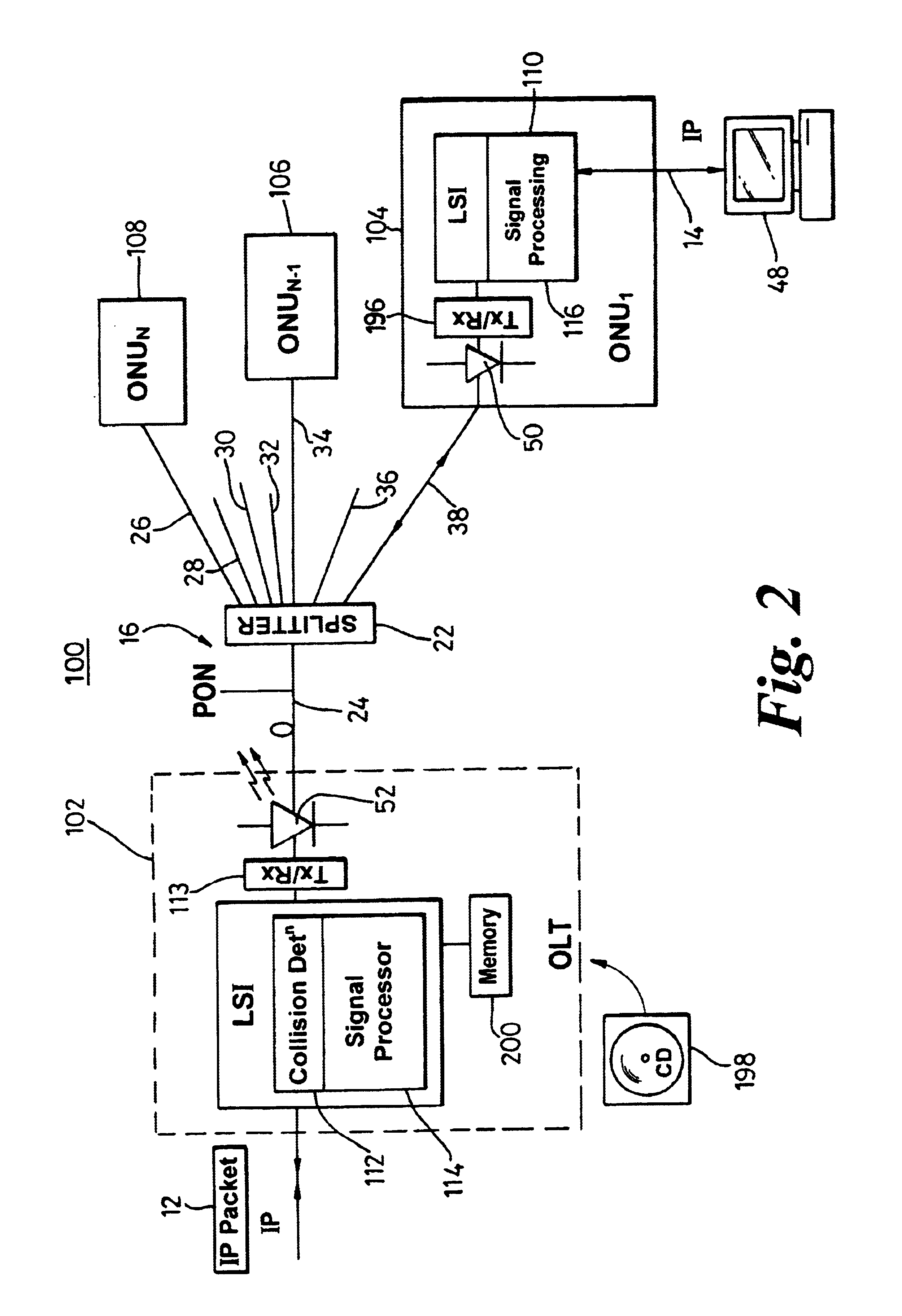System and method for transfer of IP data in an optical communication networks
a technology of optical communication network and ip data, applied in data switching network, transmission monitoring, multiplex communication, etc., can solve the problems of inefficiency in system operation, waste associated with the operation, and inability to fully utilize the payload bytes, so as to reduce the complexity of outstations and remove the burden of high cost and complexity
- Summary
- Abstract
- Description
- Claims
- Application Information
AI Technical Summary
Benefits of technology
Problems solved by technology
Method used
Image
Examples
Embodiment Construction
FIG. 1 illustrates a prior art duplex optical communication network 10 in which data 12-14 is transferred across a PON 16 using ATM as the transport protocol. In such APONs, outstations 1822 (of which only three are shown for clarity reasons) may only transmit data when specifically allowed to do so by instructions from a base station or exchange, generally termed “optical line termination equipment” (OLT) 20. The OLT 20, located at the ‘headend’ of the network 10, is connected to a passive optical splitter 22 via an optical fibre 24. A passive splitter 22 is used to distribute (in the downlink) and consolidate (in the uplink) signals to and from the OLT to and from several ONUs. The passive splitter therefore includes a single fibre 24 interface and a multiple fibre 26-38 interface, i.e. point-to-multipoint connectivity. Each of the multiplicity of outgoing fibres 26-38 terminates at one of the outstations, which outstations each contain an LSI chip 40 and to other circuitry (appre...
PUM
 Login to View More
Login to View More Abstract
Description
Claims
Application Information
 Login to View More
Login to View More - R&D
- Intellectual Property
- Life Sciences
- Materials
- Tech Scout
- Unparalleled Data Quality
- Higher Quality Content
- 60% Fewer Hallucinations
Browse by: Latest US Patents, China's latest patents, Technical Efficacy Thesaurus, Application Domain, Technology Topic, Popular Technical Reports.
© 2025 PatSnap. All rights reserved.Legal|Privacy policy|Modern Slavery Act Transparency Statement|Sitemap|About US| Contact US: help@patsnap.com



